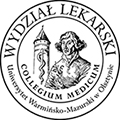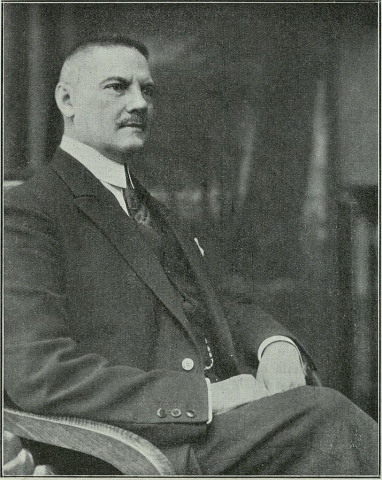Jan Piltz
Jan Władysław Piltz was born on January 15, 1870 in Aleksandów Kujawski (which in that time was part of Russian Imperium) in a family with patriotic traditions. His father – the station master – in 1863 took part in the January Uprising against Poland occupation by the Russian Empire, as a result of which he was exiled to Siberia for a few years. Jan Piltz graduated high school in Warsaw and in 1888 he went to study to Switzerland. He did not want to study in Warsaw because of the significant degree of russification of Warsaw University.
In 1890 Piltz got a high-school certificate according to the Swiss syllabus and started to study. Initially, Piltz studied natural sciences and mathematics in Zurich, but after the year he moved to Berno to study medicine. From Berno he returned to Zurich, where in 1895 he graduated in medicine. Still as a student (from 1893) Piltz was an assistant at the Department of Anatomy and Histology at the University in Zurich. Then he started to work as an assistant with prof. August Forel – the famous Swiss psychiatrist. Thanks to his abilities and diligence, Piltz won the trust of Forel and after the graduation took part in the organization of the famous University Psychiatric Clinic in Burghőlzli close to Zürich (‘Burghőlzli’). Then he co-worked with other famous Swiss surgeons including Olivet, Bleuler and Mahaim.
However, Piltz felt himself as being Polish and wanted to work in his homeland (which was under Russian occupation). So, in 1897 he went to Kazan in Russia, where he notified his diploma and received permission to practice medicine in the Russian Empire. Then Piltz worked at the neurological and Psychiatric Clinic in St. Petersburg and took a doctorate under prof. Bekhterev.
In 1898 Piltz came back to Switzerland and started to work at the University Psychiatric Clinic in Burghőlzli and after 2 years the cantonal government of Vaud appointed him as a vice director at the psychiatric clinic in Lausanne. He worked on that station form April 1, 1899 to January 1 1900. During his stay in Switzerland, Piltz started scientific work on pupillary reflexes. In 1900 Piltz went to Paris to work under Jules Déjerine and Józef Babiński at the Hopital Salpetrière, and after a few months he went on a scientific journey to Germany, Holland and Russia to become familiar with diagnostic and therapeutic methods used in various neurological and psychiatric clinics.
In 1901 Piltz came back to Warsaw, where he organized the first neurological department of the city at a hospital in the district Praga. At that time he also arranged an operating room for experiments on animals, especially on dogs. In this room, Piltz continued studies on pupillary reflexes initiated in Switzerland.
In 1904 he invented the pupillograph – an apparatus consisting of a camera, long lens and lamp, which allowed for photographing the pupils in physiology and during pathological states, as well as the observation of eye movement. In the same year, Piltz obtained an habilitation at the University in Lausanne on the basis of dissertations about dissociated sensory loss in damage and diseases of the spinal cord, entitled “Contribution à l′étude de la dissociation de la sensibilité douloureuse et thermique dans les cas de traumatisme et d′affection de la moëlle épinière”.
In 1905 the faculty council of the Faculty Medicine at the Jagiellonian University in Cracow offered Piltz to take the leadership at the newly formed Department and Clinic of Neurology and Psychiatry – the first neurological-psychiatric teaching hospital in the Polish territory. It should be pointed out that Cracow at that time was placed in the Austro-Hungarian Empire. Piltz went to Cracow and on April 23, 1905 he was appointed the assistant professor and the head of the above mentioned department. Piltz organized his department from the ground up. Initially it was based in the basement of the ophthalmic clinic. Plitz obtained funds from Vienna – the capital of the Austro-Hungarian Empire and in 1908 the building of a new headquarters of the department and neurological clinic started.
Simultaneously, Piltz focused on the proper training of medical staff. He sent his future co-workers to various European neurological clinics in Switzerland and Germany. In 1912 Piltz was appointed a full professor of neurology and psychiatry, and in 1914 the building of the clinic was completed.
The organization of the clinic was based on neurological and psychiatric hospitals in Switzerland and Germany, where Piltz worked after his study. Therefore it was this fact that after the outbreak of the Great War, the clinic was converted into a military infirmary. During the war (in the years 1914-1918) above 11 000 soldiers with neurological and mental diseases were treated at the clinic. Within this number about 3000 soldiers suffered from posttraumatic stress disorder, and the clinic was one of the first hospitals treating this disease. After the war, on January 1, 1919 the clinic started to see civilian patients and reorganized into a teaching hospital again, still headed by Piltz.
Jan Piltz was a well-known person in Cracow. He was twice the dean of the Faculty of Medicine (in the years 1915/1916 and 1929/1930), the founder of Neurlogical-Psychiatric Association in Cracow and the member of the construction committee for mental hospital in Kobierzyn. He was also the chairman of the Medical Association in Cracow and corresponding member of the Neurological Association in Vienna and the Royal College of Psychiatrists in London. In 1930 Piltz represented Poland during the International Congress of Psychiatric hygiene in Washington. Moreover, Jan Piltz was the pioneer of pediatric neuropsychiatry (he founded the center for nervous children with behavioral problems and the first in Cracow the educational care facility or children with mental retardation) and non-hospital caring for patients suffering from mental diseases (he was the one of founders of the Association of Caring for Psychotics in 1927).
In 1918, when Poland regained its independence and uniform judicial psychiatry legislation was created, Piltz participated in the work of the Codification Committee and worked on the definition of insanity of criminals and forensic psychiatric observations.
Prof. Piltz was also a great academic teacher. His lectures - vivid and interesting with practical presentations of neuronal or mental diseases were always attractive for students. Jan Piltz was the creator of the “Cracow neurological school”, to which many later professors (including among others Eugeniusz Artwiński, Eugeniusz Brzezicki, Władysław Chłopicki, Włodzimierz Godłowski, Eufemiusz Herman, Hermann Nunberg) belonged. One of them characterized prof. Piltz in the following words: “besides the scientific and research activities, he was not only the scholar, but also a man of action with a steadfast will of goals implementing”
Jan Piltz died in Cracow on November 26, 1930 at the age of 60 from a pulmonary embolism, which was a complication after kidney stone surgery and was buried at Rakowicki Cemetery.
Scientific achievements of Jan Piltz
Jan Piltz was the author of several dozen scientific publications. He achieved world renown as one of the pioneers of studies on pupillary reflexes. Jan Piltz described some kinds of these reflexes, namely:
- Westphal – Piltz pupillary reflex (described in 1899) – physiological reflex, which manifests in the constriction of the pupil in the case of voluntary contraction of the orbicularis oculi muscle
- Piltz paradoxical pupillary reflex (1902) - dilation of the pupils by exposure to light, observed among others during tabes dorsalis
- Piltz neurotonic pupillary reflex (1903) – slow dilation of constricted pupil during convergent movement, noted in syphilis of the brain
- Piltz imagination – dependent pupillary reflex (1905) the movement of pupils under the imagination of light or dark
- Haab–Piltz attention reflex – when the attention of patient was turned to a dark object within the field of vision without changes of light a dilation of the pupils was noted. This reflex is observed after damage of the cerebral cortex
Moreover, Piltz studied changes concerning the movement of pupils, their size and form during a wide range of neuronal and mental disorders. He also described cortical centers responsible for the movement of pupils, as well as pupillary reflexes in blind persons.
The other interests of science of prof. Piltz concerned:
- Disturbances in sensory stimuli conduction during diseases of the nervous system
- Sensory conduction during sclerosis multiplex
- Symptoms and mechanisms in encephalitis lethargica
- Neuroses caused by the war (now known as posttraumatic stress disorder)
- Heredity in mental diseases
- Mechanisms of obsessions, depression and psychoticism.



